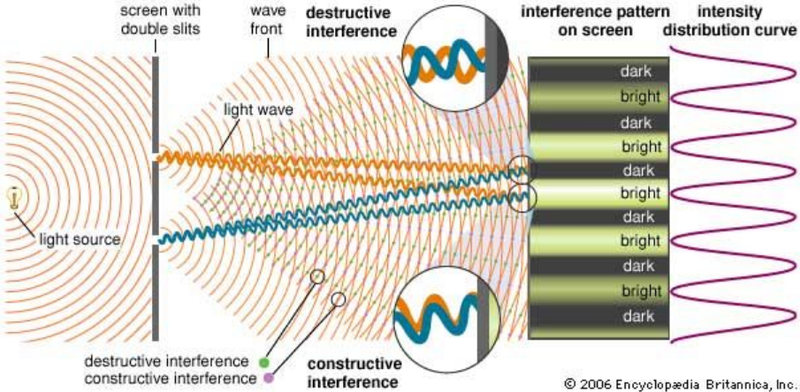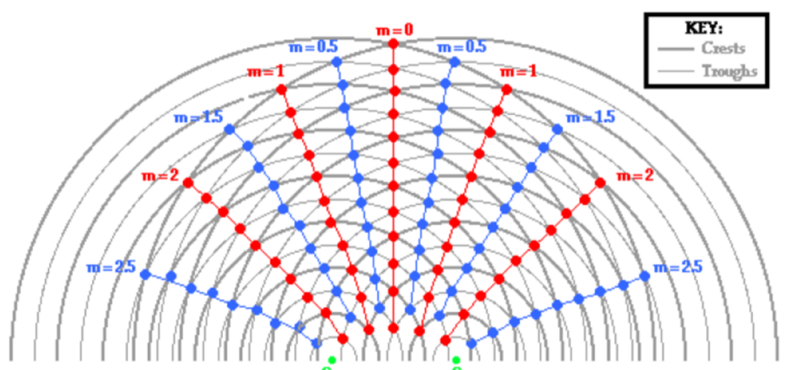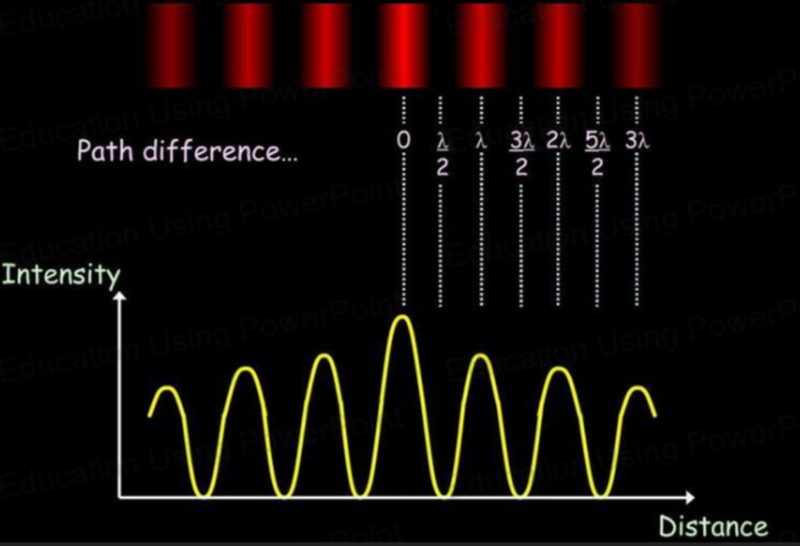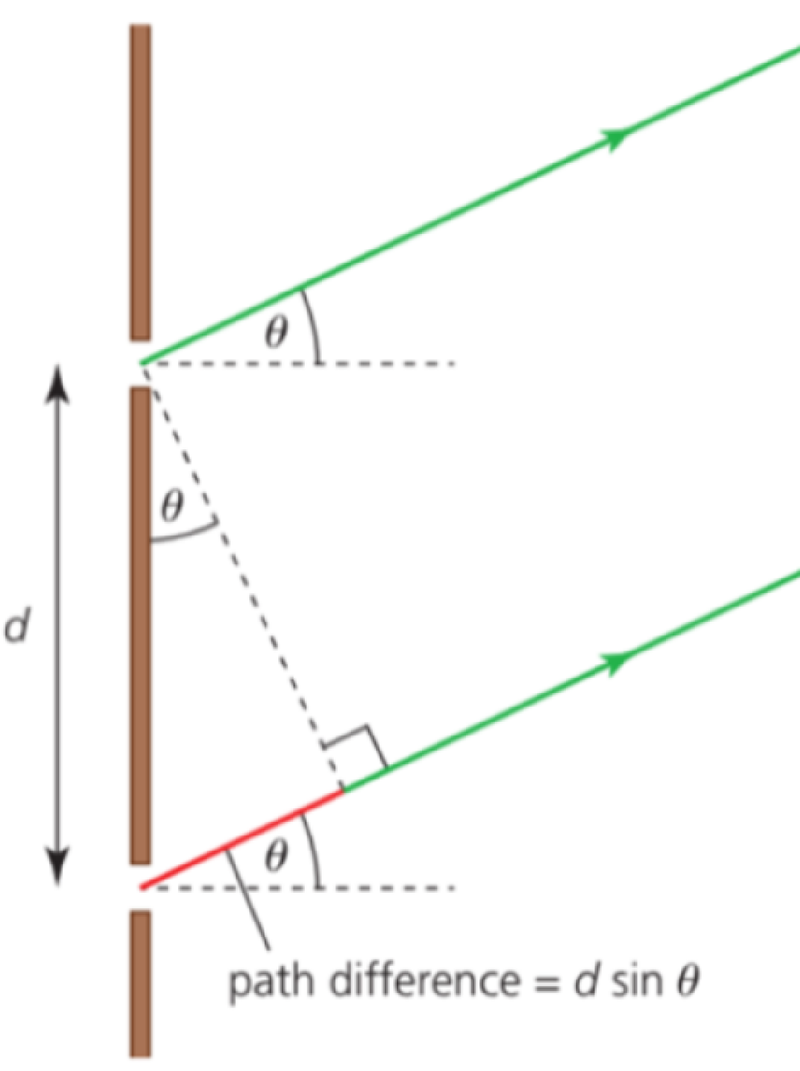Interference Patterns from Two Slits
- We've seen how waves coming from point sources of identical frequencies produce a pattern of nodal and antinodal lines.
- The polymath Thomas Young conducted the double slit experiment to test what this pattern would look like.
- The experiment consists of a light beam sent through two very narrow slits, causing it to diffract.

- This creates two point sources of the same frequency, as they come from the same initial source.
- These create nodal and antinodal lines, which are projected onto a screen.

- The nodal lines, where there is constructive interference, create areas of high intensity.
- The areas of high intensity are called maxima, or fringes.
- The antinodal lines, where there is destructive interference, create areas of low intensity.
- The areas of low intensity are called minima.
- The formula used in determining the variables of the double slit experiment is:

- Where s is the separation between fringes, d is the distance between the two slits, D is the distance between the screen and the slits, and λ is wavelength.

- Generally the intensity is brightest at the center and decreases with the number of fringes.

Predicting Interference Patterns

- In double slit interference, the path difference can be found as dsinθ, where θ is the angle a line drawn from the slit to a specific minima makes with the normal, and d is the width of the slits.
- As constructive interference occurs when the path difference is equal to (n)λ, we can determine that constructive interference will occur when:

- As destructive interference occurs when the path difference is equal to (n+1/2)λ, we can determine that destructive interference will occur when:

Sources
https://www.britannica.com/science/light/Youngs-double-slit-experiment